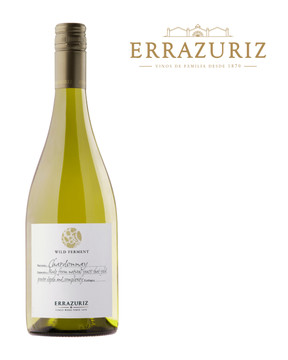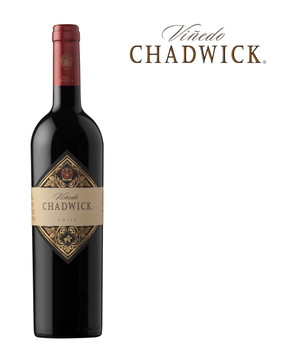
Errazuriz La Cumbre Syrah 2019.
The 2019 vintage of La Cumbre is deep and intense purple in colour with ruby highlights. The nose offers aromas of lavender, pink pepper, blueberries, maqui, and blackberries framed by cloves and nutty notes that recall marzipan with delicate touches of cinnamon and nutmeg. Notes of blueberry pie, black cherries and dark chocolate appear on the palate. This is a lush and very juicy, long and mouth-filling wine with tremendous breadth, balance and persistence.
VINEYARDS: The grapes for La Cumbre were selected from the best lots of our MAX I and MAX V vineyards in the Aconcagua Valley, 60 kilometres from the Pacific Ocean. The region’s Mediterranean climate presents an extended dry season cooled by gentle afternoon breezes that enter the valley from the Pacific Ocean.
VINTAGE: The 2019 vintage officially ended at Viña Errázuriz with the harvest of the last Carmenere grapes from the Aconcagua Valley on May 3rd. Now we are able to outline the main conclusions of the 2019 vintage, which is described by Technical Director Francisco Baettig as a dry and warm season, giving way to an early vintage, with splendid sanitary conditions of our grapes. The vintage began with a shortfall of rains by the end of winter and beginning of spring, totalizing a deficit of 30% in 2018. The dry soils pushed us to irrigate one month ahead compared to an average year. On the other hand, the absence of rains during spring ensured splendid sanitary conditions of our grapes, which prevailed throughout the entire season. Temperatures early in the spring were similar to historic records, but were followed by a hot November. After experiencing normal temperatures in December and January, February was a hot month just like November, with heatwaves recorded in the central and southern regions that did not reach the Aconcagua Valley. This scenario made the harvest go ahead of the historical dates. March, on the contrary, was colder than average records. By this time, the harvest in Aconcagua Costa, which started in February 11, was at full speed, and was completed in a record lapse of just 45 days, in benefit of preserving the aromas and acidity of the wines. In general, the vintage delivered good yields, although some varieties registered lower yields than our estimations, such as the decrease in 17% for Cabernet Sauvignon from Aconcagua Inland, 10% for Merlot, 6% for Malbec and 4% for Sauvignon Blanc. In all, a dry and healthy year, warmer than historical averages, with November and February as the hottest months, giving way to an early vintage. The quality of our vineyards was demonstrated once again given the climatic fluctuations, droughts and high temperatures, delivering grapes of outstanding sanitary conditions and great concentration.
WINEMAKING: The month of January, however, was quite unusual, with a heat summation that was 7.9% lower than average, delaying veraison by 7 days for Cabernet Sauvignon and 14 days for Carmenere. Temperatures picked up in February with a heat summation that was 6.2% higher than the historic average, and finally, March was 6.6% colder. The harvest took place 10 days earlier in Cabernet Sauvignon, due to yields that were 15% lower than expected, while Carmenere was harvested on its historic date, April 30th, with 38% more fruit than anticipated.
The 2019 vintage of La Cumbre is deep and intense purple in colour with ruby highlights. The nose offers aromas of lavender, pink pepper, blueberries, maqui, and blackberries framed by cloves and nutty notes that recall marzipan with delicate touches of cinnamon and nutmeg. Notes of blueberry pie, black cherries and dark chocolate appear on the palate. This is a lush and very juicy, long and mouth-filling wine with tremendous breadth, balance and persistence.
VINEYARDS: The grapes for La Cumbre were selected from the best lots of our MAX I and MAX V vineyards in the Aconcagua Valley, 60 kilometres from the Pacific Ocean. The region’s Mediterranean climate presents an extended dry season cooled by gentle afternoon breezes that enter the valley from the Pacific Ocean.
VINTAGE: The 2019 vintage officially ended at Viña Errázuriz with the harvest of the last Carmenere grapes from the Aconcagua Valley on May 3rd. Now we are able to outline the main conclusions of the 2019 vintage, which is described by Technical Director Francisco Baettig as a dry and warm season, giving way to an early vintage, with splendid sanitary conditions of our grapes. The vintage began with a shortfall of rains by the end of winter and beginning of spring, totalizing a deficit of 30% in 2018. The dry soils pushed us to irrigate one month ahead compared to an average year. On the other hand, the absence of rains during spring ensured splendid sanitary conditions of our grapes, which prevailed throughout the entire season. Temperatures early in the spring were similar to historic records, but were followed by a hot November. After experiencing normal temperatures in December and January, February was a hot month just like November, with heatwaves recorded in the central and southern regions that did not reach the Aconcagua Valley. This scenario made the harvest go ahead of the historical dates. March, on the contrary, was colder than average records. By this time, the harvest in Aconcagua Costa, which started in February 11, was at full speed, and was completed in a record lapse of just 45 days, in benefit of preserving the aromas and acidity of the wines. In general, the vintage delivered good yields, although some varieties registered lower yields than our estimations, such as the decrease in 17% for Cabernet Sauvignon from Aconcagua Inland, 10% for Merlot, 6% for Malbec and 4% for Sauvignon Blanc. In all, a dry and healthy year, warmer than historical averages, with November and February as the hottest months, giving way to an early vintage. The quality of our vineyards was demonstrated once again given the climatic fluctuations, droughts and high temperatures, delivering grapes of outstanding sanitary conditions and great concentration.
WINEMAKING: The month of January, however, was quite unusual, with a heat summation that was 7.9% lower than average, delaying veraison by 7 days for Cabernet Sauvignon and 14 days for Carmenere. Temperatures picked up in February with a heat summation that was 6.2% higher than the historic average, and finally, March was 6.6% colder. The harvest took place 10 days earlier in Cabernet Sauvignon, due to yields that were 15% lower than expected, while Carmenere was harvested on its historic date, April 30th, with 38% more fruit than anticipated.







